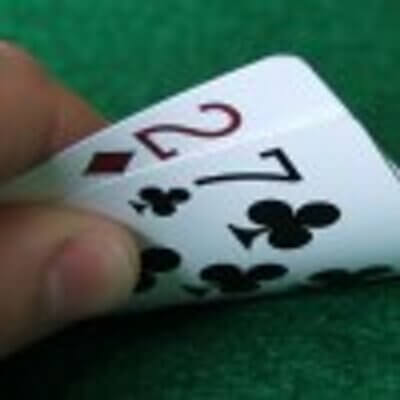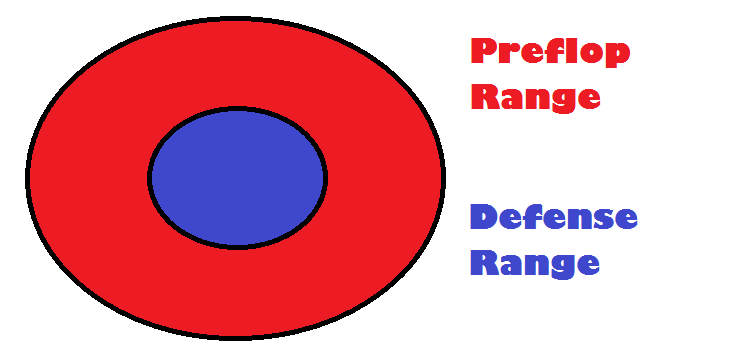Betsizing is an infinitely complicated topic that can’t be solved in it’s eternity. However, by understanding key concepts you can make much more informed bets, calls and folds.
Minimal defense frequency is a GTO (Game Theory Optimal) concept. GTO play dictates that for every bet, there is a minimum amount of opponent’s range that must continue.
MDF is an excellent introduction to GTO poker because it introduces the idea of unexploitability.
How can I conceptualize the minimal defense frequency?
Often with betsizing, we think about the odds we give to call. What hands CANNOT fold because their chances to win are too high? This kind of thinking is based around pot odds.
GTO Poker requires us to avoid situations where our opponent auto-profits.
For every opponent bet, we should continue enough of the time that our opponent cannot bluff any two cards. Otherwise, we would be exploitable.
In other words, the minimal defense frequency is what hands we cannot fold because it makes bluffing us too profitable.

If you fold so much that your opponent looks at 27offsuit as a golden bluff, you’re doing something wrong.
Mathematical Example of Minimal Defense Frequency
We find ourselves on the flop with a pot of $200. Our opponent bets $100 as a continuation bet.
He is risking $100 to win $200, so a pure bluff C-bet needs to work 1/3rd of the time to be profitable. (See other articles on bluffing odds if confused).
Our opponent should never be able to pure bluff any two cards against us in this spot, otherwise we are horribly exploitable. Thus, there is a minimal defense frequency of 67% here.
We must defend 67% of our range to this cbet to be unexploitable by c-bet bluffs.
What happens if we folded more than 67% of the time? Then math says our opponent can cbet his entire range profitably, and that should never be possible in a spot like this.
A good opponent would catch on, exploitatively cbet his entire range against you for half-pot and watch your hemorrhage your bankroll.
Thus, our continuation range needs to be at least 67% of our pre-flop flatting range. This shouldn’t be too hard, since we only need 25% equity by pot-odds to profitably continue.
However, if 67% of our range isn’t strong enough to realize 25% equity in this spot, then we have come to the flop with too wide of a range. In order to be unexploitable by C-bet bluffs without being exploitable by calling too many flops, we need to strengthen our pre-flop range until our post-flop range can continue.

We need our defense range (the smaller circle) to be at least 67% of the big circle (the range that sees the flop) against a half pot bet.
If it’s too small, we need to either make the small circle bigger (defend a wider range to CBet) or make the big circle smaller (call less pre-flop).
Conclusion
For many, this might be your first introduction to GTO poker. You may be used to thinking of “what should I do for this opponent?” or “how should I play this hand?”
Advanced poker theory revolves around playing ranges, and doing so unexploitably so good opponents can’t take advantage.
Now – don’t take this as a commandment. There are situations where an optimal play might be to allow auto-profit air bluffs. For example, if you are OOP against a much stronger range it’s probably best not to concern yourself with air bluffs in that range turning a profit.
However, minimal defense frequency is a good, fast litmus test to see if we might be making a mistake by folding wider than we should.






















